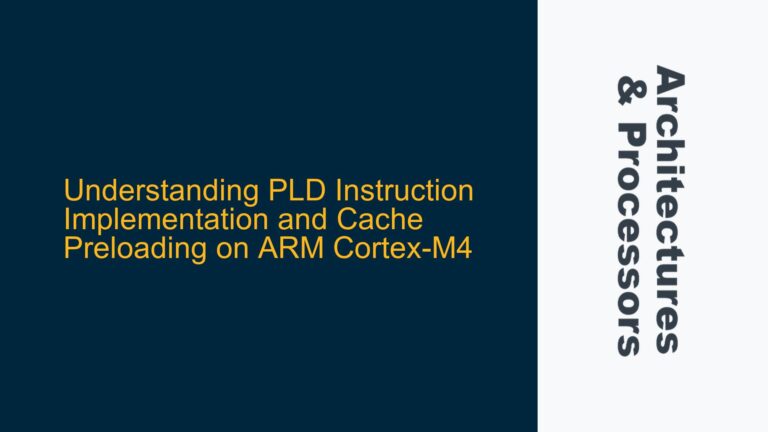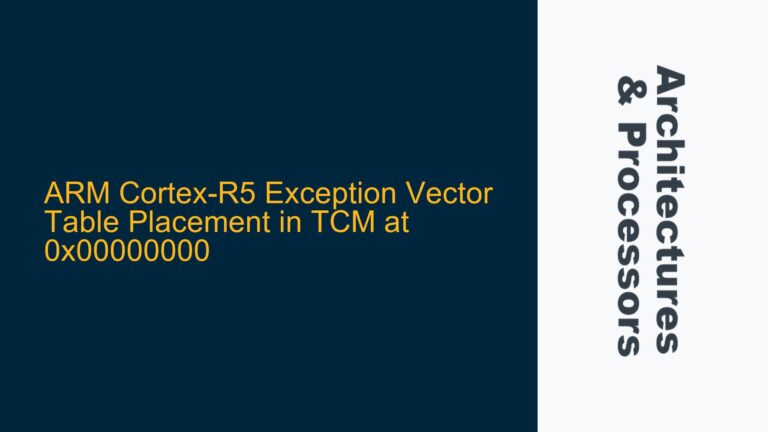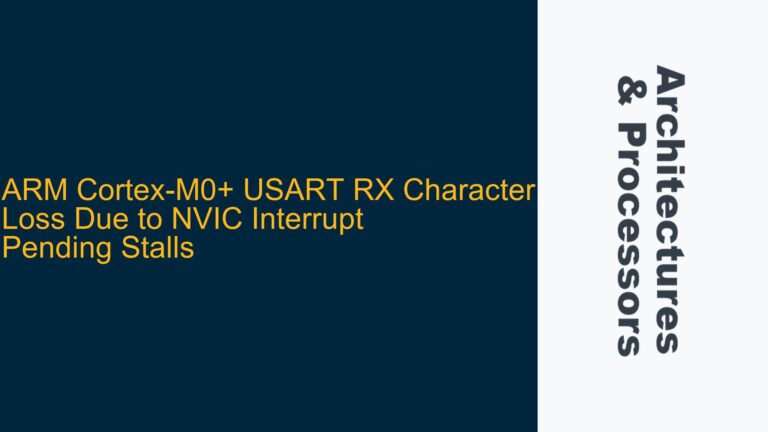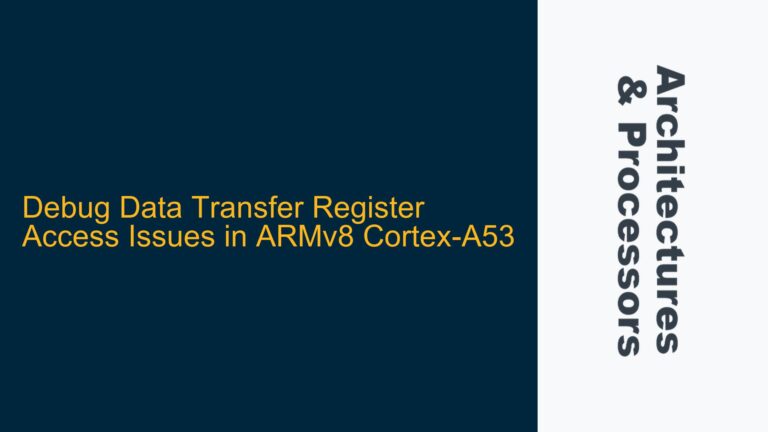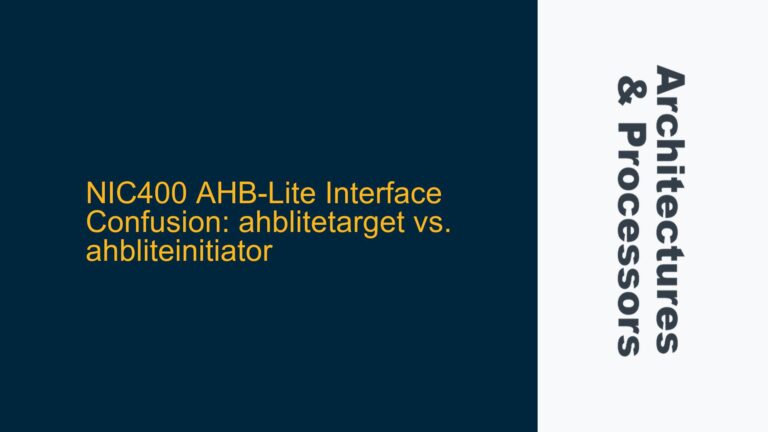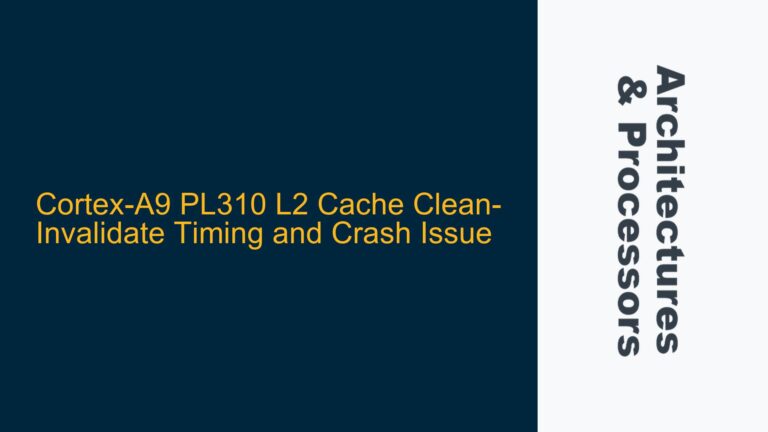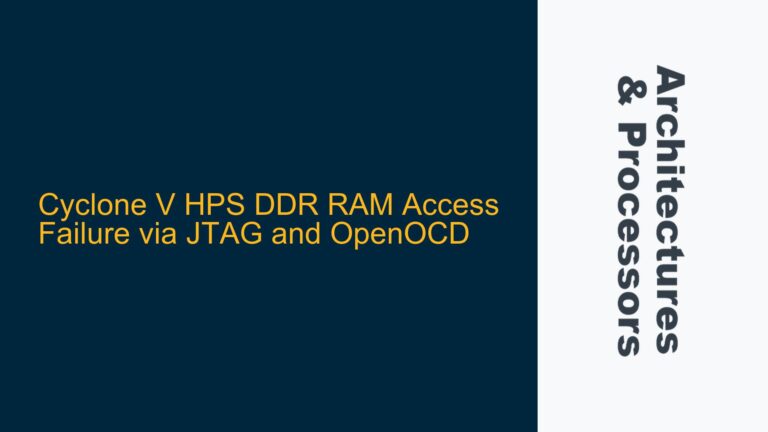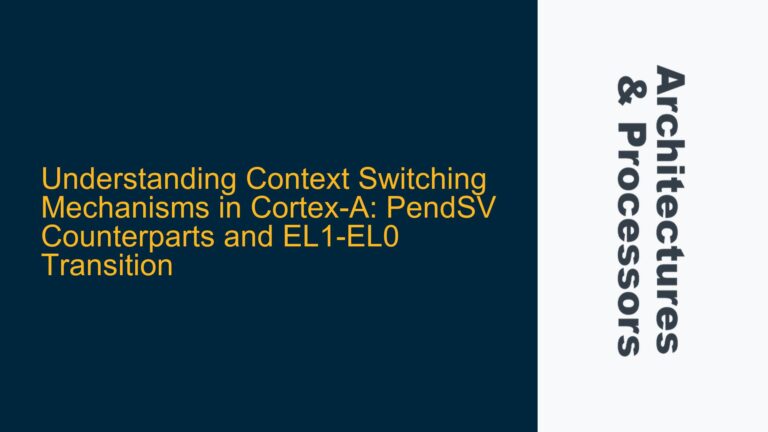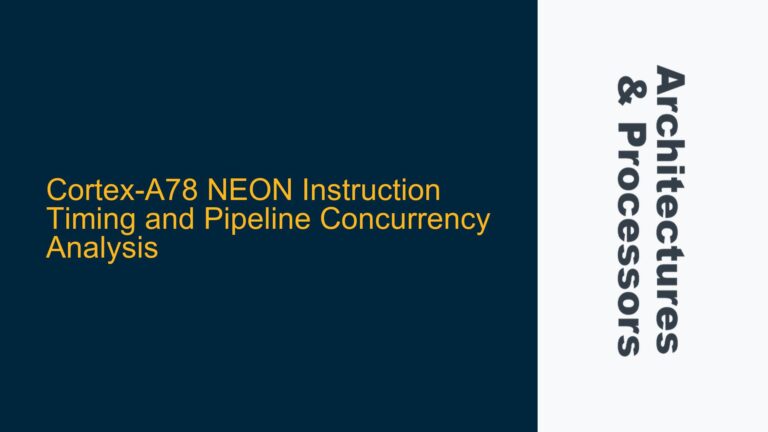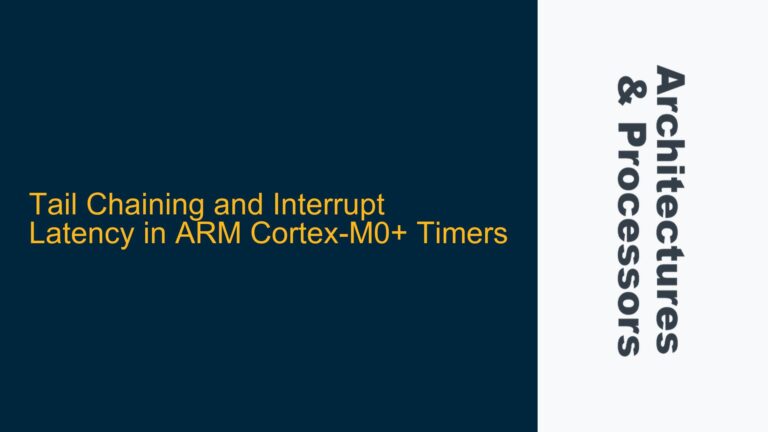PLD Instruction Implementation and Cache Preloading on ARM Cortex-M4
ARM Cortex-M4 PLD Instruction Behavior and Cache Preloading The ARM Cortex-M4 processor, a member of the ARMv7-M architecture family, is widely used in embedded systems for its balance of performance and power efficiency. One of the instructions that has raised questions among developers is the Preload Data (PLD) instruction. The PLD instruction is intended to…
